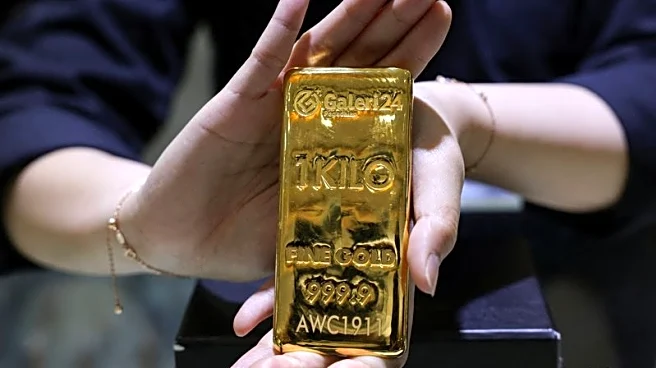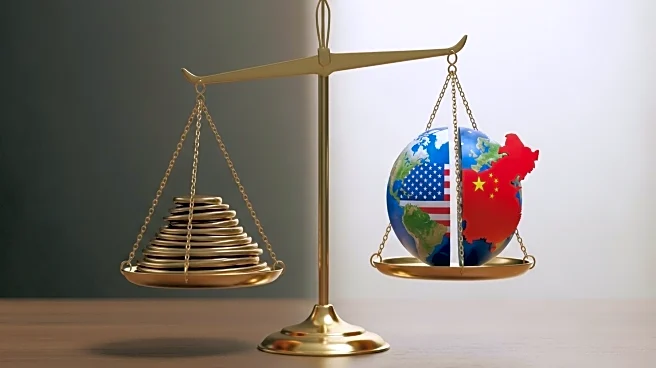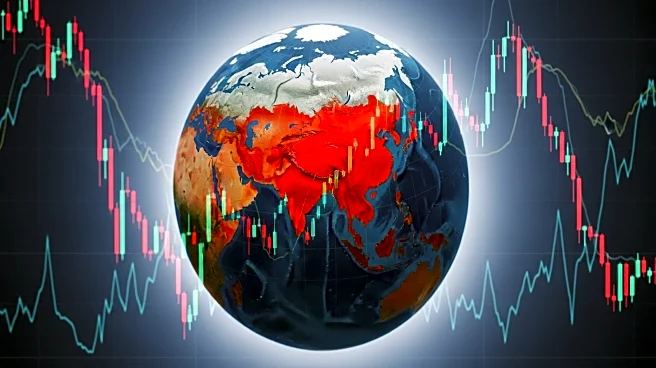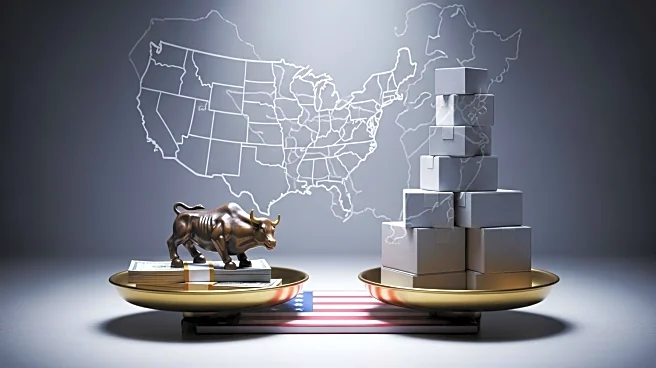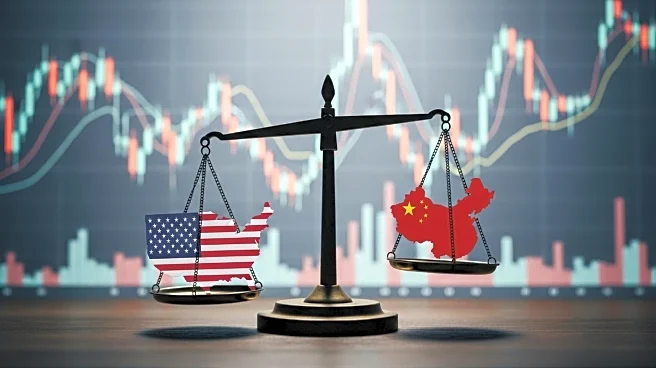What's Happening?
Bank of America Global Research has increased its price forecast for gold, projecting it to reach $5,000 per ounce by 2026. This adjustment follows gold's recent surge past $4,000 per ounce for the first time on October 8, with prices hitting a record high of $4,079.62 on Monday. The rise in gold prices is attributed to heightened investor interest in safe-haven assets, spurred by President Trump's renewed tariff threats against China and expectations of U.S. interest rate cuts. Despite the potential for a near-term correction, the bank anticipates continued upward momentum in gold prices, driven by a projected 14% increase in investment demand.
Why It's Important?
The forecasted increase in gold prices signifies a potential shift in investment strategies, as investors may increasingly turn to gold as a hedge against economic uncertainties and geopolitical tensions. The anticipated rise in demand for gold could impact various sectors, including mining and finance, as companies and investors adjust to the changing market dynamics. Additionally, the expectation of U.S. interest rate cuts could further influence economic policies and investment decisions, affecting broader financial markets and economic stability.
What's Next?
As gold prices continue to rise, stakeholders in the mining and financial sectors may need to reassess their strategies to capitalize on the growing demand for precious metals. Investors might increase their allocations to gold, while mining companies could explore expansion opportunities to meet the anticipated demand. Furthermore, policymakers may need to consider the implications of interest rate adjustments on the economy and financial markets, potentially leading to further economic measures to stabilize growth.
Beyond the Headlines
The rising gold prices could have long-term implications for global trade and economic relations, particularly in the context of ongoing tariff disputes and geopolitical tensions. As countries navigate these challenges, the role of gold as a stable investment may become increasingly significant, influencing international economic policies and trade agreements.


